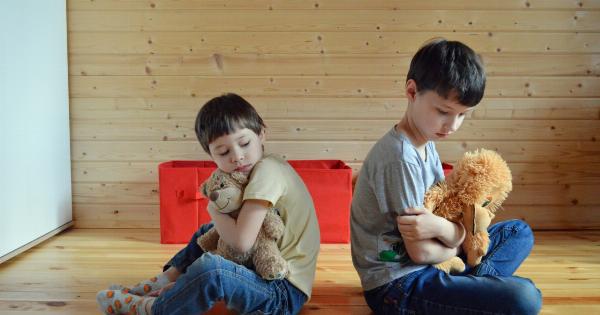Mourning the death of a youngster is one of the most challenging experiences that one can face. The loss can be sudden or expected, but the pain and sorrow that follow are always profound.
The journey of grief is personal and different for everyone; however, it is essential to know that the path to healing is possible.
The Initial Response to the Loss
When a youngster passes away, the initial response is usually shock, disbelief, and denial. The feeling of numbness and detachment from reality is common.
It is essential to recognize that these feelings are normal responses to the loss, and they can last for days or months.
It is crucial to allow oneself to feel these emotions and express them through crying, screaming, or talking to a trusted friend or family member. Grief is a natural process, and it is essential to acknowledge the pain and work through it.
The Stages of Grief
Grief has stages which can vary from person to person. The common stages of grief include:.
Denial
When a youngster dies, it is hard to accept the reality of the loss. Denial is the first stage of grief. It is when a person refuses to believe that the youngster has passed away. It can last for days or weeks.
Anger
After the denial stage, anger usually follows. It is normal to feel angry and upset about the loss. Anger can be directed towards the youngster, medical professionals, or oneself. It is crucial to acknowledge the anger and find healthy ways to express it.
Bargaining
It is common to bargain with a higher power or oneself after the loss of a youngster. Bargaining involves thinking about what could have been done differently to change the outcome.
It is important to recognize that bargaining is not a solution and can lead to feelings of guilt.
Depression
Depression is a common stage of grief. It is when a person feels overwhelmed with sadness, loneliness, and hopelessness. Grief can often trigger symptoms of depression, which can include changes in appetite and sleeping patterns.
It is important to seek help if symptoms persist.
Acceptance
The final stage of grief is acceptance. It is when a person accepts that the youngster has passed away and begins to move forward. Acceptance does not mean forgetting or moving on, but rather acknowledging the loss and finding a way to live despite it.
Coping with Grief
Grief can be overwhelming and difficult to manage. However, there are ways to cope with the pain and begin the healing process.
Seek Support
It is essential to seek support from family, friends, or a mental health professional. Talking to others who have experienced similar loss can be helpful and validating.
Journaling
Journaling can be a helpful way to express emotions and thoughts. Writing can help to process difficult feelings and track the progress of healing.
Physical Activity
Physical activity can be a helpful way to cope with grief. Exercise can release endorphins, which can improve mood. It can also be a way to distract oneself from difficult emotions.
Spiritual Practices
Spiritual practices can provide comfort and support during the grieving process. Connecting with a higher power or participating in religious practices can bring a sense of peace and understanding.
The Importance of Self-Care
The journey of grief can be emotionally and physically exhausting. It is essential to prioritize self-care and take time to care for oneself.
Rest
Getting enough rest is crucial for physical and emotional wellbeing. Grief can disrupt sleeping patterns, so it is important to establish a routine to promote better sleep.
Eating Well
During the grieving process, it is easy to neglect healthy eating habits. However, nutritious foods can support physical and emotional health. It is important to eat a balanced diet with plenty of fruits, vegetables, and whole grains.
Engage in Hobbies
Hobbies and activities can provide a sense of joy and distract from feelings of grief. Engaging in activities that bring happiness can improve mood and reduce stress.
Allow Time for Healing
Healing takes time, and it is important to allow oneself to grieve. Taking small steps towards healing and committing to the process can aid in recovery.
Conclusion
Mourning the death of a youngster is a difficult experience, but it is possible to find healing and peace. The journey of grief is unique to each person, and the stages of grief can vary.
Seeking support, practicing self-care, and allowing oneself to grieve are crucial to the healing process.
Remember that grief takes time, but with patience and resilience, it is possible to find a way to live with the loss and find happiness again.





























